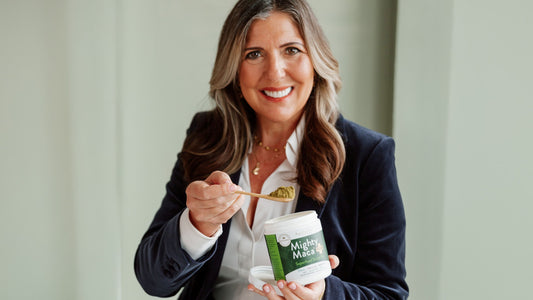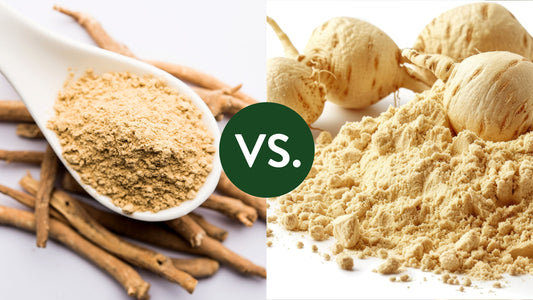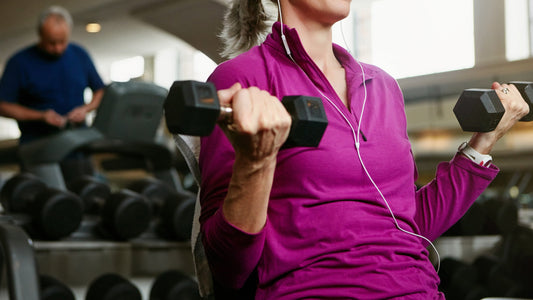Get a Move on Health Through Every Life Stage!
Exercise and hormones!
We don’t usually associate the two, but they are very interrelated. The hormones most associated with exercise and muscle are insulin, cortisol, and oxytocin (the three master hormones), plus glucagon, growth hormone, estrogen, and testosterone. Here’s a brief rundown of the physiological functions they control:
Insulin.
Exercise makes muscle cells more receptive to insulin. So when insulin arrives at cells to usher in glucose, the cells welcome them both, stabilizing your blood sugar. You don’t want insulin to be out of whack; if it is, this can trigger diabetes. Exercise is thus a great way to prevent insulin resistance (meaning the cells don’t respond to the hormone), thereby correcting excess insulin and blood sugar before they do damage.
Cortisol.
This hormone supports energy metabolism during exercise by dismantling blood fats (triglycerides) and protein to manufacture glucose to help fuel exercise. Exercise can also drive away excess cortisol in your body, brought on by chronic stress.
Oxytocin.
The hormone of love and boding, oxytocin increases when you exercise – one of the reasons you feel so great after a workout.
Glucagon.
The pancreas releases this hormone in response to low blood sugar. Once in circulation, glucagon stimulates the release of fatty acids from fat stores and increases blood glucose levels, both of which help fuel exercise activity.
Growth hormone.
This muscle-building, fat-burning hormone is stimulated by high-intensity exercise such as strength training and cardio workouts.
Estrogen.
The most important female sex hormone, estrogen declines in middle age. However, we’re exposed to harmful estrogens in everything from plastics to pesticides in the environment. This can lead to estrogen dominance, starting at around age 35. Too much estrogen in the body is a risk factor for breast cancer. Exercise helps lower this risk.
Testosterone.
This male hormone (women have it too, in smaller amounts) helps repair muscles after exercising and plays a significant role in helping to develop new, body-firming and toning muscle. Also, exercise stimulates the production of testosterone.
So – what’s the best exercise to balance these hormones? All exercise is beneficial as long as you enjoy it. Personally, I love to do yoga, walk, weight-train, swim, play tennis and box
To be honest, I am not someone who has put exercise as a priority because I love it. Oh, no. It is a necessity and I am always happy after the deed has been done. I much prefer to curl up with a good book. So creating more ways to be active has been essential to my keto-green way of life and this includes my treadmill desk. Because I make it a priority to move regularly, I feel better and I have more energy. Tip: Encourage yourself as I do with my mantra :-) “I will be so happy when I am done!”
However, there are specific types of exercise that expressly benefit the life stage you’re in – perimenopause, menopause, or postmenopause. In honor of Healthy Aging Month, commit to getting more active by choosing the best workout to “fix” your own hormones.
The Best Perimenopause Workouts

Perimenopause is the time when your ovaries gradually begin to make less estrogen. It usually starts in your 40s, but can begin in your 30s or even earlier. Perimenopause lasts up until menopause. In perimenopause, you might start having hot flashes, night sweats, headaches, trouble sleeping and greater anxiety or depression than usual. Research tells us that the following types of exercise can relieve perimenopause symptoms:
Tai Chi.
Often described as “meditation in motion,” tai chi is an ancient Chinese tradition that involves a series of movements performed in a slow, focused manner and accompanied by deep breathing.
A detailed review published in Worldviews on Evidence-Based Nursing in 2017 reported that tai chi improved many perimenopause symptoms: bodily pain, general health, vitality, mental health, and spinal strength. Many health clubs and gyms offer tai chi classes, which might be worth checking out if you’re struggling with symptoms associated with your fluctuating hormones.
Walking.
Here’s a do-anywhere activity that also relieves symptoms, plus builds health. A study of 157 premenopausal women found that walking with long strides three times a week or more had an awesome impact on symptoms. The women slept better, were less irritable, had fewer joint or muscle pains, were more energetic, and had better sex. They also lost weight, especially around their bellies. The study was published in the journal Menopause in 2014.
If you’re just starting a walking program, begin the first week by walking 20 minutes three times a week. For the next few weeks, increase your time to 30 minutes. As you feel more energetic and fit, add an extra session or two to your weekly walking program. Try to work up to five sessions a week, for 30 to 45 minutes each time.
Walking helps reduce excess cortisol too. Sometimes I just have to intend to walk out the door and go for 10 minutes, then turn around and walk back.
Strength training.
This is a type of weight-bearing activity using weights, elastic bands, or your own body weight, in which your muscles are challenged to work harder each time they’re exercised. It develops not only muscle, but also bone tissue, therefore preventing osteoporosis as you get older.
A 2009 study published in the European Journal of Applied Physiology involving 42 perimenopausal women offered proof of the benefits of strength training. The women worked out with weights for 60 minutes three times a week. Each week, they got stronger, developed more muscle, and strengthened their VOmax, a measurement of the body’s ability to consume oxygen. The better your VOmax, the more oxygen goes to your muscles for a more intense exercise effort.
Lift weights, use strength-training machines, use bands, or perform bodyweight exercises at least two days a week. Do one set each of ten to twelve moves that strengthen your major muscle groups—arms, shoulders, chest, back, abdominals, hips, and legs. If you’re beginning, choose a lighter weight you can lift at least 15 to 20 times. Once this gets comfortable, and you are over the soreness, increase the weights to where you can do a maximum of only 10 to 12 reps.
I prefer functional exercises and body weight exercise over machines that isolate single muscle groups. Work with a trainer or gym that incorporates these.
The Best Menopause Workouts

Next comes menopause. Even though we often speak of menopause as the part of your life in which your period has ceased, it’s technically defined as the date twelve months after your last period. With menopause, your body shuts down its reproductive capacity, drastically affecting just about every organ.
Hormonally, what does menopause look like? Your estrogen levels, which fluctuated wildly during perimenopause, drop 75 percent or more from their peak. For some, this major change is easy and trouble-free, with few problems and manageable symptoms. For others, there are unpleasant, often debilitating symptoms like hair loss, acne, aches and pains, crashing fatigue, and weight gain. As estrogen falls off, fat shows up in certain areas—the tummy, thighs, butt, chin, and under eye area. Estrogen is also necessary for glucose utilization in the brain so may be why we have memory issues and are 3 x as likely as men to develop dementia as we get older and why getting healthfully keto adapted is critical in this stage of our life (read my book The Hormone Fix).
Remember: Menopause is natural and mandatory, suffering is optional!
The following workouts are excellent hormone fixes during menopause:
Strength training.
This activity becomes even more essential during menopause. It is essential for skeletal health, weight control, and your overall well-being. Findings from the Study of Women’s Health Across the Nation (SWAN), a study of ten thousand women as they go through menopause, showed that 20 to 30 percent of forty- to fifty-five-year-olds had difficulty performing simple physical tasks such as climbing a flight of stairs or carrying grocery bags around the block. Even putting clothes on over your head or clasping your bra strap can become difficult. If women are that weak then, what will happen to them at eighty?
Fortunately, various studies show that engaging in just two strength-training workouts a week increases strength in women over fifty quite significantly. The sooner you start, the better you’ll feel and look! Remember to do functional exercises (see videos with me and Mindy) that will help us live our best quality of life as we age. Not to mention put our tight exercise bras on and off over our heads and buckle our bras in the back, and make it to the bathroom in the dark without losing our balance and falling.
Yoga.
The word “yoga” actually refers to a union of body, mind, and spirit, an alignment of the physical and nonphysical parts of yourself. It’s not an overstatement: if you practice yoga, will not only find your health and well-being improve, but every area of your life will benefit.
Yoga is particularly important for stopping or reversing osteoporosis, which can strike during this life stage. A 2016 study, published in Topics in Geriatric Rehabilitation, found that 80 percent of older participants, most of whom had osteoporosis or its precursor, osteopenia (low bone density), who practiced twelve yoga poses (often modified) a day showed improved bone density in their spine and femurs. Each pose was held for thirty seconds. The daily regimen once learned, took only twelve minutes to complete. These findings applied to younger women with healthy skeletons, too.
I can see why. Yoga plays a vital role in preventing fractures by building stability, flexibility, and agility. This means you’re less likely to fall and break something—and if you do start to fall, your agility may help you catch yourself.
Yoga classes are available at practically all gyms, fitness centers, and community centers, so you should be able to easily enroll in a class that meets your needs and level of experience. No matter how time-crunched you are, you can create time for yoga. In fact, yoga will create more time for you.
The Best Postmenopausal Workouts

As menopause ends, you enter postmenopause—which can actually be quite liberating, a new place of centeredness, and a potentially very rewarding phase of life. You begin to reassess your life and goals. You’re more inclined to say, “What shall I do in the next season of my life?” After all, you do have a lot of living left to do! There are very few symptoms leftover from menopause, so you can move in the direction of new hopes and goals—especially if you have your health. Here are some exercise suggestions for this stage in your life.
Aquatic Resistance Training.
This activity involves the use of resistance devices or elastic bands designed for use in a pool, usually performed under the guidance of an instructor. It can be very easy on the joints, and is an excellent form of exercise if you have osteoarthritis or other joint issues, or want to build strength.
When 46 postmenopausal women took part in a 24-week aquatic resistance class, they lost body fat, increased muscle, and lowered their blood pressure. This study appeared in 2009 in the European Journal of Physiology. Water exercise is a great way to get fit, especially if you don’t like to swim. Check to see if your gym, health spa, or local YMCA offers aquatic exercise classes.
Dance.
You’re never too old to kick up your heels – and get fit in the process, plus improve your quality of life. According to a 2016 study published in Menopause, 52 sedentary postmenopausal women were randomly assigned to receive either dance therapy or participate in a non-dance control group. The dancers completed two months of dance therapy, three sessions weekly. By the end of the study, the women in the dance group had improved their balance, mobility, cardiac fitness, flexibility, and energy levels significantly, compared to the control group (which had no such improvements.
Many YMCAs, community centers, and gyms offer dance and exercise classes. Consider joining up and being a part of the fun.
On my website, I have many helpful articles on another form of exercise that, while it may not help you fit in your skinny jeans, it will improve your pelvic health: Kegel exercises. I even have a video lesson on these, plus articles such as How to Do Kegel Exercises and a Couch Talk on the topic with Isa Herrara, a pelvic floor expert. More on these exercises in a future blog!
For more wonderful tips, especially on exercising after 50, be sure to check out my Couch Talk with Debra Atkinson, a well-known personal wellness coach, on The Perfect “after 50” Fitness Formula.
What’s more, there are other actions you can take in addition to exercising to balance your hormones. Read my blog on 6 Therapeutic Lifestyle Changes You Can Make Today.
Whatever type of exercise appeals to you, please, please get active! Numerous other studies demonstrate that many of the changes—both physical and mental—that we associate with aging and menopause are partly the result of inactivity.
Many of the women I have worked with over the years—women who began exercising before and during menopause—tell me that it changed their lives.
Let exercise change yours!
My Lemon Ginger Zinger smoothie will give you the energy you need to power through your morning without feeling weighed down.

LEMON GINGER ZINGER
INGREDIENTS
- 1/2 cup fresh dandelion greens
- 1/2 cup fresh spinach
- 1 2-inch piece of fresh ginger, peeled and chopped
- 1/2 teaspoon lemon juice
- 1/4 avocado, peeled
- 11/2 cups water
- 1 scoop collagen protein powder
- 1–2 scoops powdered maca (optional) or Mighty Maca Plus (optional)
DIRECTIONS
- Place all ingredients in a blender and blend until smooth.
MAKES 1 SERVING
P.S. - Looking for an extra boost of energy?
I recommend Mighty Maca Plus. Not only is it a refreshing drink after a workout, but it also aids metabolism, boosts energy, delivers essential nutrients, and tastes great. Snag a free sample here!



